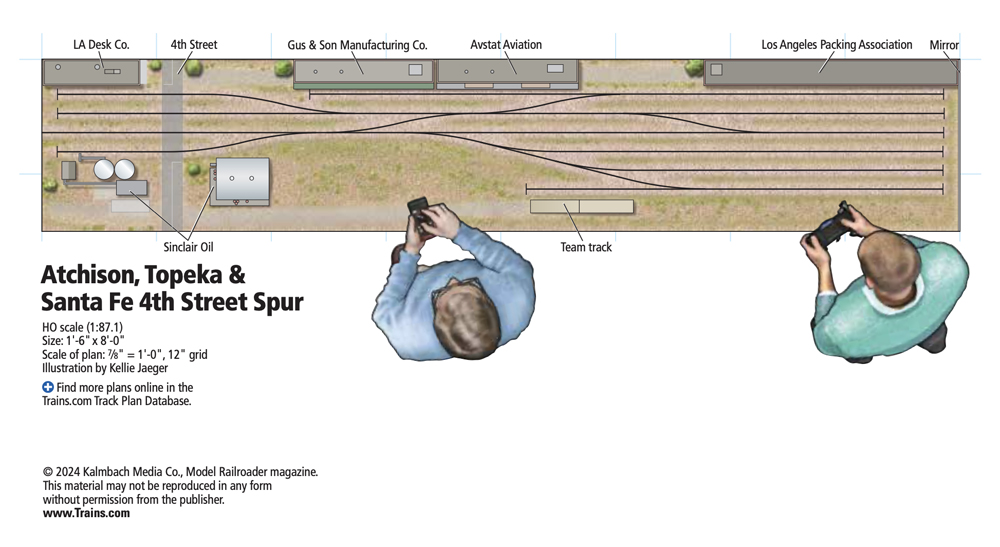
Facts and features Name: Atchison, Topeka & Santa Fe 4th Street SpurScale: HO (1:87.1)Size: 1′-6″ x 8′-0″Prototype: Atchison, Topeka & Santa FeLocale: downtown Los AngelesEra: 1950-1953Style: shelfMainline run: 8 feetMinimum turnout: No. 4Maximum grade: noneBenchwork: 1⁄2″ plywood secured to wall with shelf bracketsHeight: 48″Roadbed: 3⁄32″ basswood Track: Atlas code 83 Scenery: extruded-foam insulation board […]
Read More…
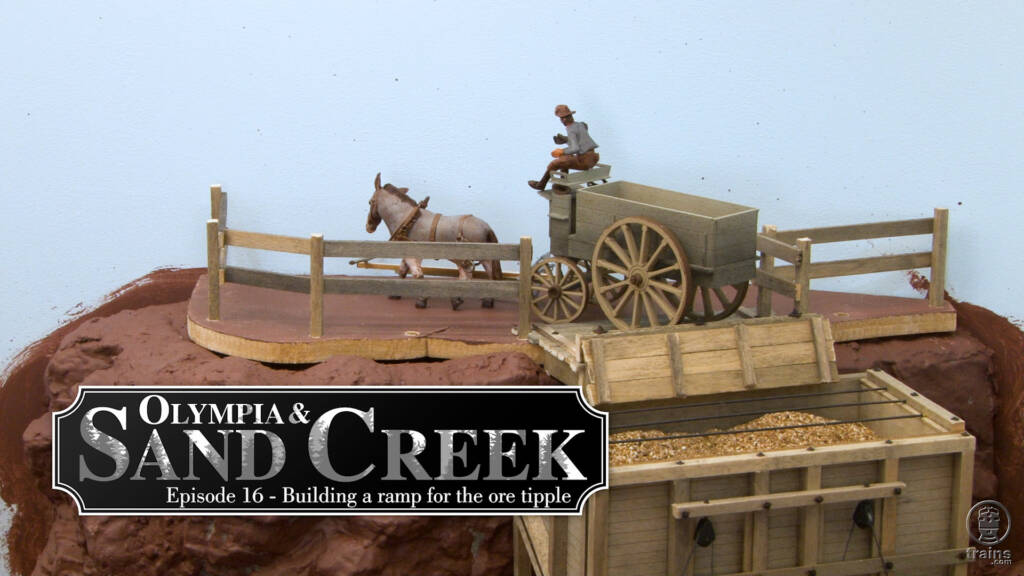
Welcome back to the Olympia & Sand Creek series with host David Popp. While David has been sidetracked with efforts to build the cart before the horse, now’s the time to put that tandem into its place! In this installment, you’ll see how to shape up a removable tipple scene that sits atop a plateau. […]
Read More…
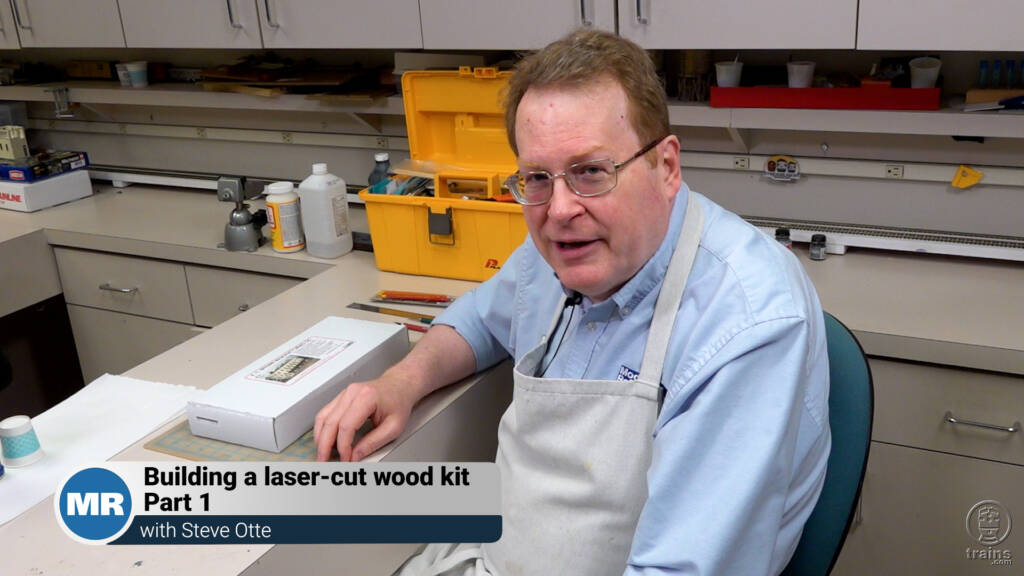
For the single rail-served factory on Model Railroader magazine’s 2024 project layout, the HO scale Free-Mo module Freemont Mills, Steve selected American Model Builders’ A.C. Brown Mfg. Co., a laser-cut wood kit. Follow along as he works through this build and see if you pick up any tips to help you on your next laser-cut […]
Read More…
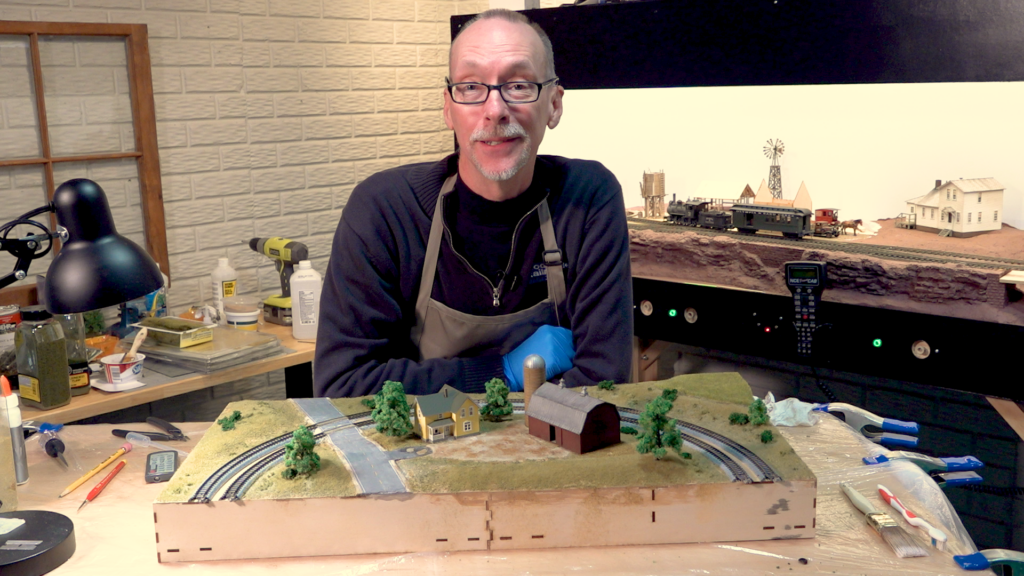
Scenery continues on the N scale (1:160) T-Trak module, with host David Popp applying gravel drives, grass and coarse ground coverings, before finishing up with the addition of a few trees. Keep up with the entire T-Trak series…exclusively on Trains.com Video! […]
Read More…
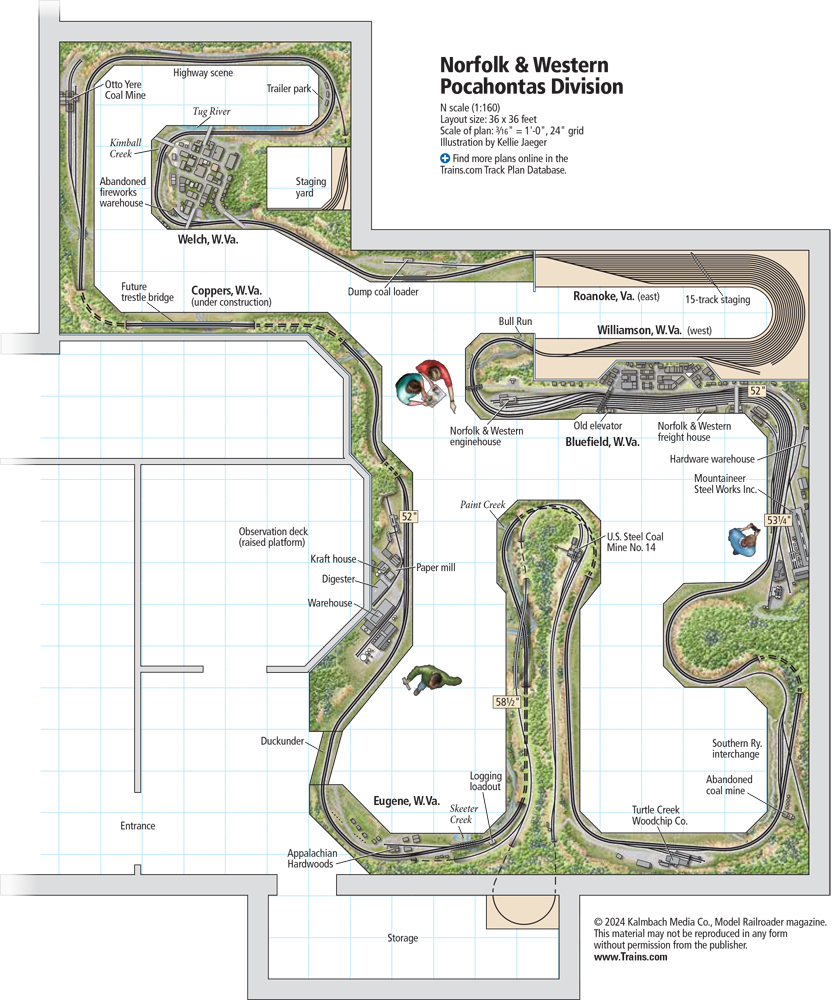
Facts and features Name: Norfolk & Western Pocahontas DivisionScale: N (1:160)Size: 36 x 36 feetPrototype: Norfolk & WesternLocale: southern West VirginiaStyle: walk-inMainline run: 290 feetMinimum radius: 18″Minimum turnout: No. 6Maximum grade: 2 percentBenchwork: tabletopHeight: 52″ to 58.5″Roadbed: corkTrack: code 80 flextrackScenery: extruded-foam insulation board and SculptamoldBackdrop: hand-painted on drywall Control: NCE Digital Command Control […]
Read More…
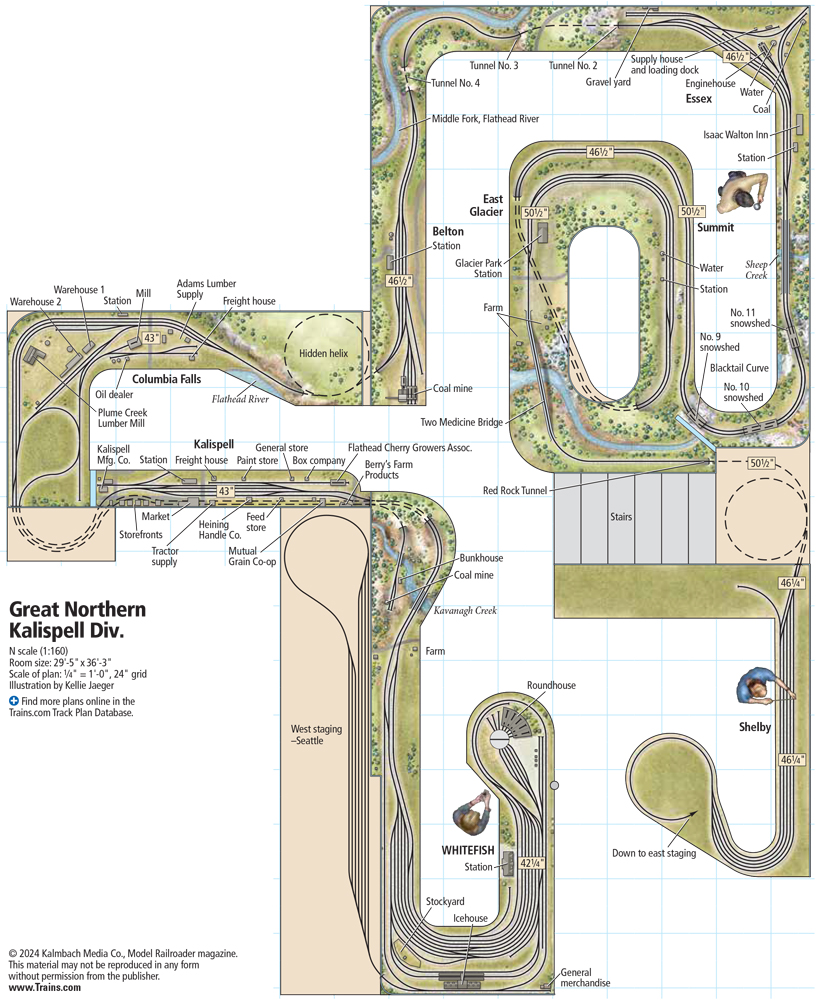
Facts and features Name: Great Northern Kalispell DivisionScale: N (1:160)Size: 29′-7″ x 36′-3″Prototype: Great NorthernLocale: MontanaEra: late 1950sStyle: walk-inMainline run: 238 feetMinimum radius: 18″ (main), 16″ (branch)Minimum turnout: No. 5Maximum grade: 2%Benchwork: box frame, shelf, and L-girderHeight: 421⁄4″ to 501⁄2″Roadbed: extruded-foam insulation board or 1⁄4″ plywoodTrack: Atlas code 55 and 80, Peco code 55Scenery: […]
Read More…
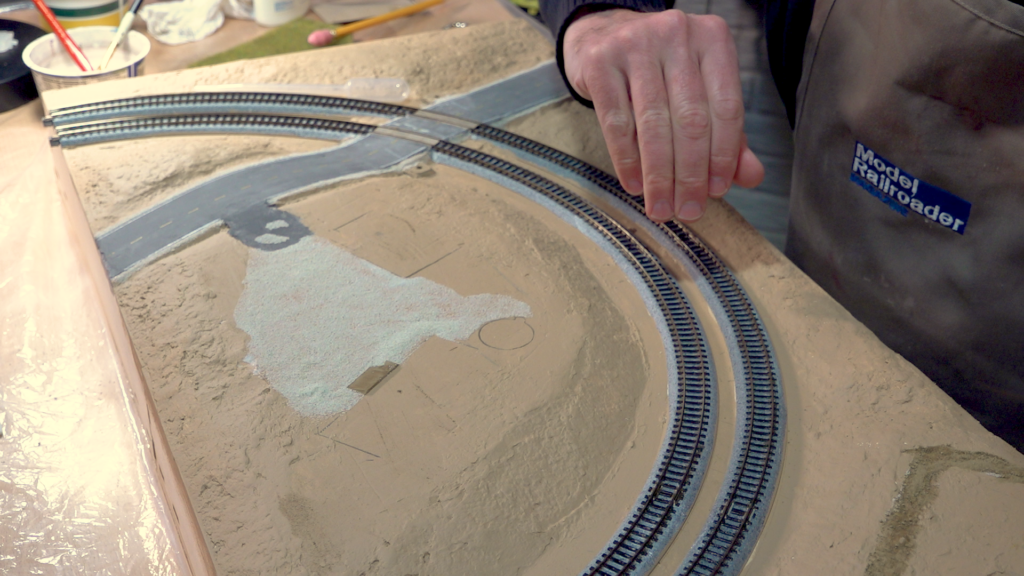
In order to start the scenery stage for his N scale (1:160) T-Trak module, host David Popp first looks to finish up a few trackwork and roadway details. And then it’s all about establishing a unifying base layer for the finished scenery. Keep up with the entire T-Trak series…exclusively on Trains.com Video! […]
Read More…
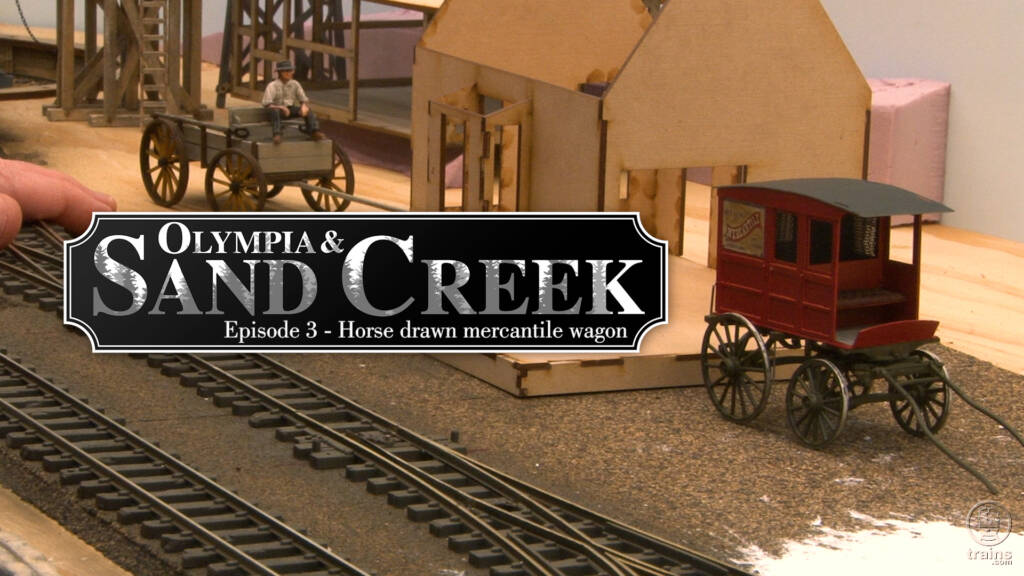
In this episode, David turns to a new construction technique as he forms the body of a wagon using resin impregnated paper. In his initial attempt with this material, David finds that it cuts, shapes, and assembles in manner similar to styrene. Follow along as he walks through the working limits and shares his valuable […]
Read More…
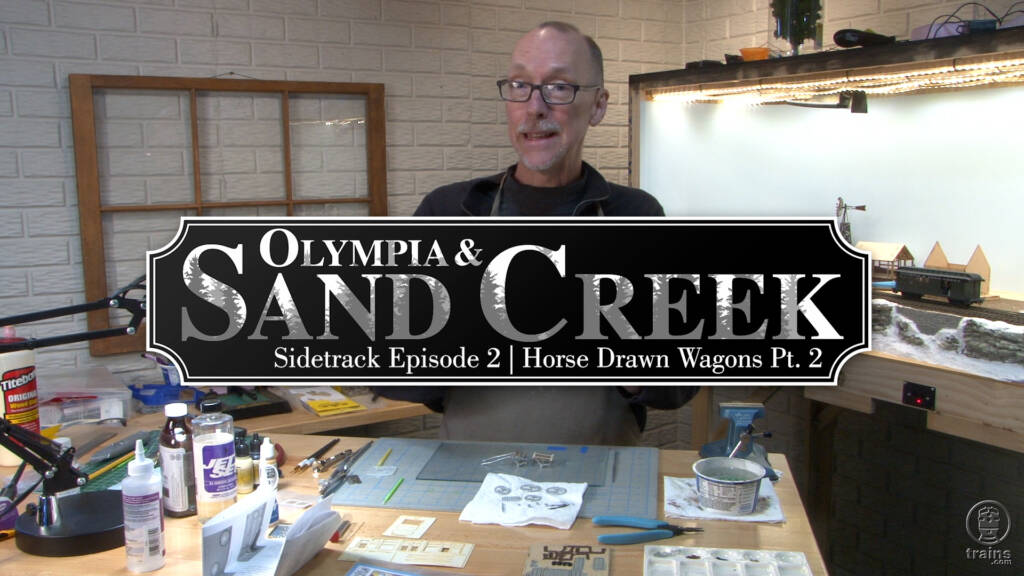
David moves from Episode 1 to the next steps of assembling wagons for the railroad town of his On30 Olympia & Sand Creek model railroad. This time, he starts in by making sure the parts to be assembled are well cleaned, all so the adhesive will properly adhere to the various white metal components. Then, […]
Read More…
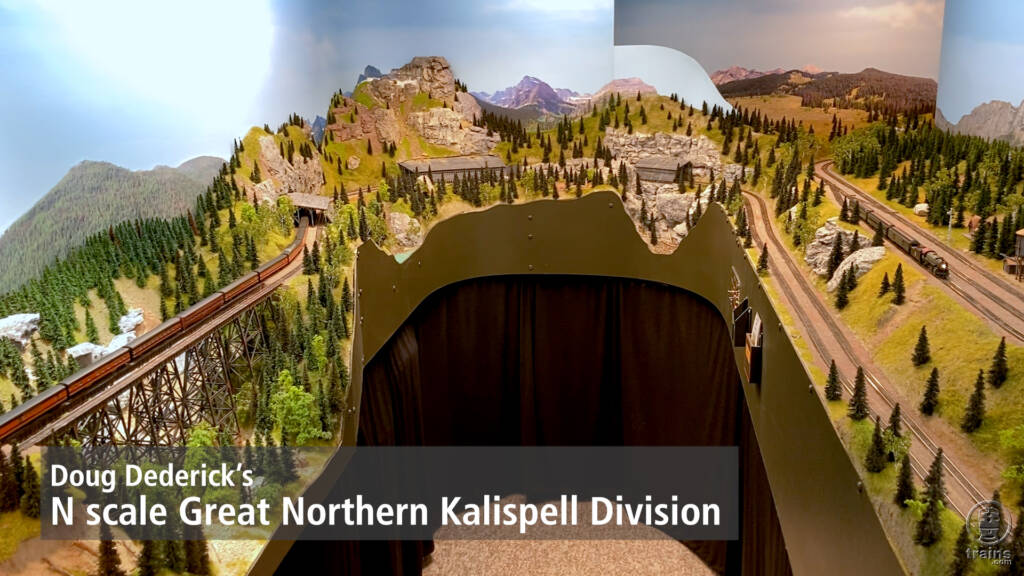
Doug Dederick’s N scale Great Northern Kalispell Division is set in Montana in the late 1950s. The 29 x 36-foot walk-in layout, featured in the April 2024 issue of Model Railroader, is set between Whitefish, Mont., and Shelby, Mont. The model railroad features several of GN’s name passenger and freight trains, including the Empire Builder, […]
Read More…
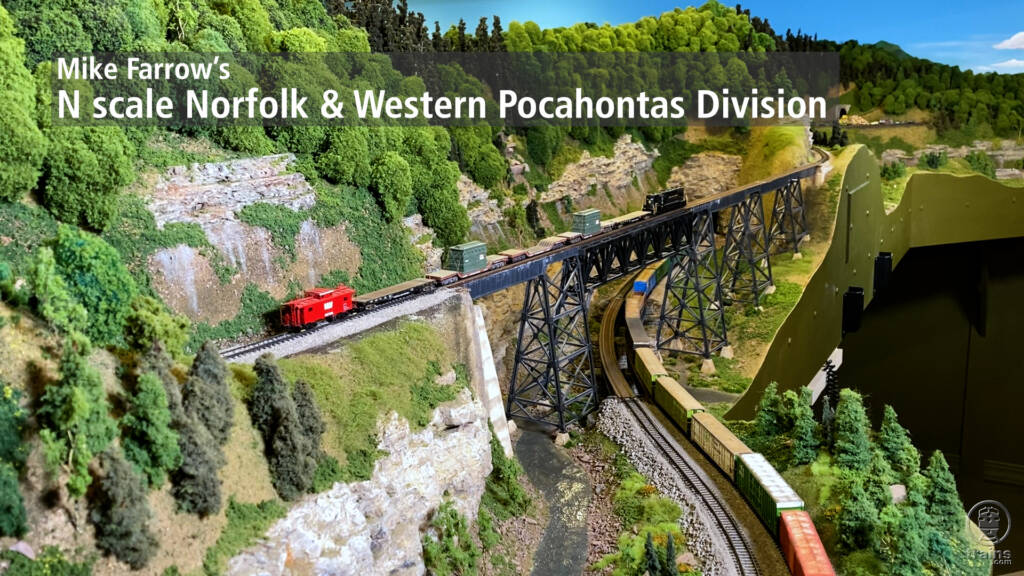
Mike Farrow’s N scale Norfolk & Western Pocahontas Division layout is set in southern West Virginia during the 1970s and early 1980s. The 36 x 36-foot walk-in model railroad features a 290-foot mainline run, 18” minimum radius curves, and No. 6 turnouts. Among the items used to re-create the authentic Appalachian scenery were ground foam, […]
Read More…
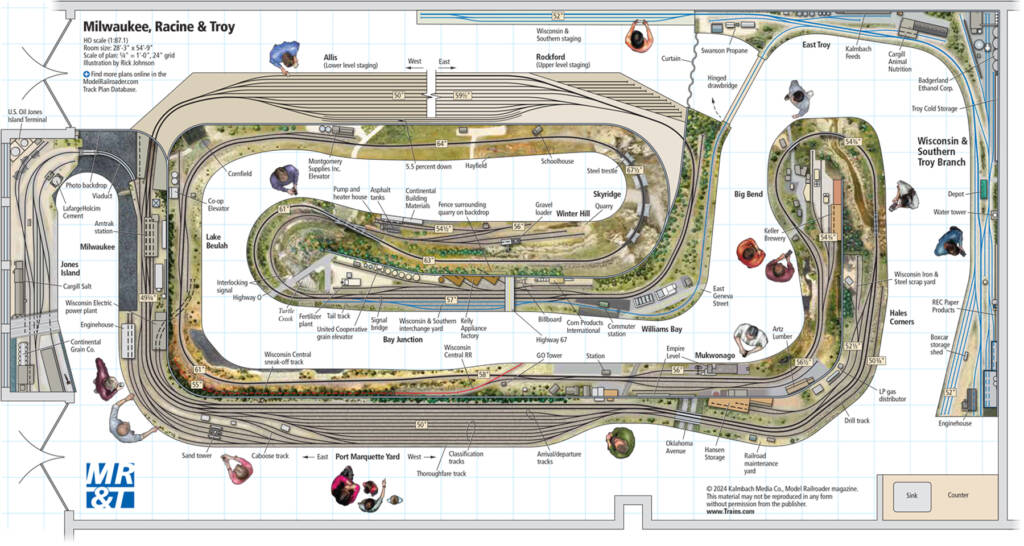
Facts and features Name: Milwaukee, Racine & Troy RR Layout owner: Model Railroader staff Scale: HO (1:87.1) Size: 28 x 54 feet Prototype: freelanced bridge line Locale: Southeastern Wisconsin Era: current day Style: walk-in Mainline run: approx. 200 feet Minimum radius: 36″ (main) Minimum turnout: no. 6 (main), no. 4 spurs Maximum grade: 3 percent […]
Read More…












